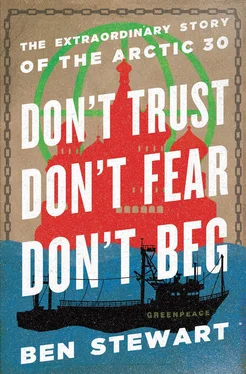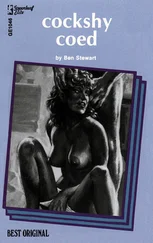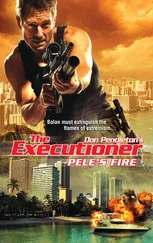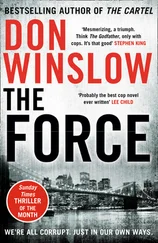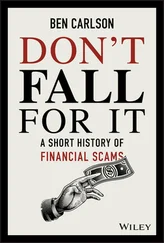In a film for the hugely influential Sunday Times newspaper entitled ‘Should we blame Greenpeace?’ [110] http://www.thesundaytimes.co.uk/sto/news/article1323429.ece
the commentator Rod Liddle said:
So Greenpeace authorised their people to clamber aboard a Russian gas installation which the Russians consider a security installation, and Greenpeace are surprised the Russians didn’t accept all of this in high spirits. What on earth was Greenpeace thinking?
Liddle then interviewed the former Russian presidential adviser Alexander Nekrassov.
‘Do you have any sympathy for the Greenpeace people?’ he asked.
‘I think the Greenpeace people made one crucial mistake,’ Nekrassov replied. ‘They should have realised the gravity of the situation. They should have warned all the people involved that this is not an easy thing, it carries a lot of danger here. I feel sorry for the people who went there without knowing what they were in for.’
Similar stories have appeared in newspapers and on television around the world. It’s a line that Dima heard on state-run TV in his cell at SIZO-1. And he’s picked up some hostility from a few of the other activists, a sense that because he’s Russian he should have known how the regime would react.
But from where Dima is sitting, this is the third time he’s been arrested in the same waters, going back to 1990. A year before the Sunrise was stormed, he was one of the people who protested at the same rig. Putin was president back then and they weren’t touched by the authorities. Dima wasn’t alone thinking Russia had a fairly sane and rational government. Granted, there were voices saying Putin was mad, but they were far from the mainstream, closer to a lunatic fringe. At worst Dima expected the crew would be detained for a few days aboard the ship after the action. And even in jail he stands by that expectation, given what he knew then.
In Frank’s compartment the argument is still raging.
‘Come on, Frank. When we had a legal briefing about what the charges could be, I’m not sure piracy was even mentioned.’
‘It fucking was.’
‘Well, even if it was, it was never said to us like it was a serious risk.’
‘Because it wasn’t. Because we weren’t going to commit piracy. You can’t commit piracy on that platform, it’s attached to the seabed, it’s not a ship. Jesus, guys, I know we’re in the shit here. I know we’re all hurting, but please, give me a break with this blame game.’
‘Well, if it wasn’t a serious risk then what are we all doing here?’
The row peters out to silence, but the tension hangs unresolved as the train rattles through the night.
Alex’s cousin has sent her a Russian–English translation booklet and it has a section devoted to romance. She pulls it out on the prison train. It has the Russian translation for phrases including I would die without your love and I like it when you touch me here and I want you. Alex, Sini and Camila shout out these lines at the guards then collapse in laughter. But the guards don’t smile. They stare ahead with concrete expressions.
Twenty-four hours have passed. The head of the guards tells them they’re close now. For some it’s a moment of huge relief. So they’re not being taken to a transit prison. This isn’t the Stolypin journey of their nightmares. Then the realisation dawns that they’re hours away from being split up. Alex and Sini shout out, ‘We love you’ and, ‘Wherever you go, stay strong!’
The train pulls into St Petersburg and the carriages fall silent. The guards take them out, one cell at a time. They have to jump across the track from the train to the open doors of an avtozak . Sini and Alex are pushed into a compartment together. Alex zips up her purple ski jacket and reaches out for Sini’s hand. They squeeze as tightly as they can.
The men are loaded into different vans. The drivers turn the engines. The women are heading for SIZO-5, some of the men for SIZO-4. But most of them are driven to St Petersburg SIZO-1.
Kresty.
It’s a crumbling stack of red brick and barred windows on the banks of the river Neva and would look like a derelict Victorian mill or an asylum if not for the distinctive onion domes of the Alexander Nevsky cathedral that rise from the middle of the complex. Kresty means ‘crosses’. The nineteenth-century architect who designed the prison had it built in the shape of two crucifixes, so the prisoners could better repent of their sins. [111] http://best-museums.com/russia/85-museum-crosses.html
The prison housed the enemies of tsarism, then after Lenin’s seizure of power Kresty housed enemies of the new communist government. In The Gulag Archipelago , Solzhenitsyn wrote: ‘During the whole year [1918] it would certainly seem that more than a thousand were shot in Kresty alone’ – of whom six were peasants guilty of clipping excess hay from a communal farm to feed their cows.
During the long decades of Soviet rule Kresty held both criminals and political dissidents from what was then called Leningrad, Russia’s most liberal city. Anna Akhmatova, one of Russia’s greatest poets, would wait for hours outside the prison walls in the hope of delivering a package to her son, the historian Lev Gumilev. [112] http://www.poetryfoundation.org/bio/anna-akhmatova
Akhmatova captured the anguish of the relatives of Kresty’s inmates in her famous poem, ‘Requiem’.
How, the three hundredth in a queue,
You’d stand at the prison gate
And with your hot tears
Burn through the New-Year ice.
In the preface to the poem, she describes how she was prompted to put her experience into words after spending seventeen months outside the prison gates. She saw ‘a woman with blue lips. She had, of course, never heard of me; but she suddenly came out of that trance so common to us all and whispered in my ear (everybody spoke in whispers there): “Can you describe this?” And I said, “Yes, I can.”’
Escape from Kresty is almost impossible, but many have tried. In 1946 a prisoner named Volkov removed bricks from the wall of his cell, one by one, and put them in his chamber pot, which he emptied outside. Eventually he created a hole to the street, and one night he made his break. Having secured his freedom he went immediately to the public baths, where he was recognised by a surprised but diligent off-duty guard. It is said that Volkov was returned to Kresty humiliated but clean. [113] http://www.spb.aif.ru/society/135936
In 1984 two prisoners forged KGB identification papers from cardboard and red thread. They scoured magazines for pictures of uniformed officers who resembled them, cut out those photos and stuck them to the card. Their counterfeiting skills were so advanced that nobody at the gates of Kresty thought twice about letting them stroll out into the street to embrace freedom. [114] http://www.spb.aif.ru/society/135936
The Soviet Union was dissolved on 26 December 1991, but Kresty remained. Four years later, under the presidency of Boris Yeltsin, a monument was erected on the opposite bank of the River Neva, commemorating the victims of political repression. A year after that another monument was installed in Kresty itself, this time to the poet Anna Akhmatova. But recognition of past crimes did little to improve conditions there. By the end of the millennium Kresty housed ten thousand prisoners – three times its capacity – and was suffering a virulent outbreak of tuberculosis. [115] http://articles.latimes.com/1999/oct/17/news/mn-23277
As the avtozak pulls into the grounds of the famous prison the men see barbed wire and the decrepit, dominating cathedral that rises up from the middle of the jail, built in the same style and with the same bricks as the incarceration blocks. At the top of a white dome are two crosses. One is a typical Russian Orthodox cross, the other a more familiar T shape. From a certain angle the two crosses, overlaid, take on a very particular profile, and Dima remembers that it’s this shape that is the design of the prison tattoo that professional criminals have inked around their fingers across Russia – the U of the Russian Orthodox cross, over a T.
Читать дальше
